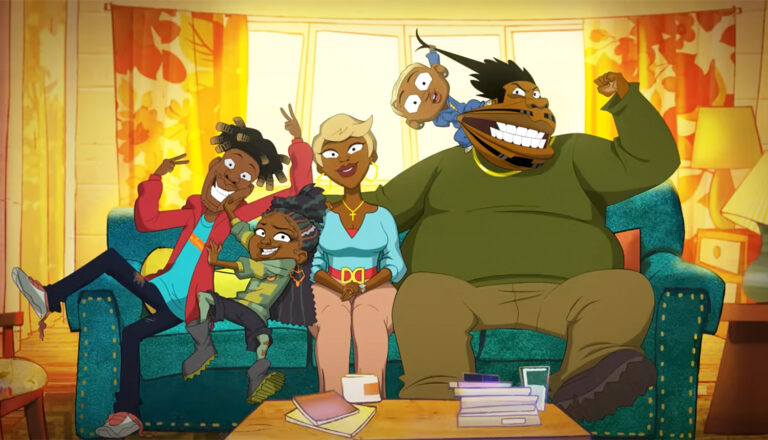
Good Times
Netflix takes a classic sitcom, Good Times, and turns it into a vulgar, violent, sexually-charged TV-MA show.
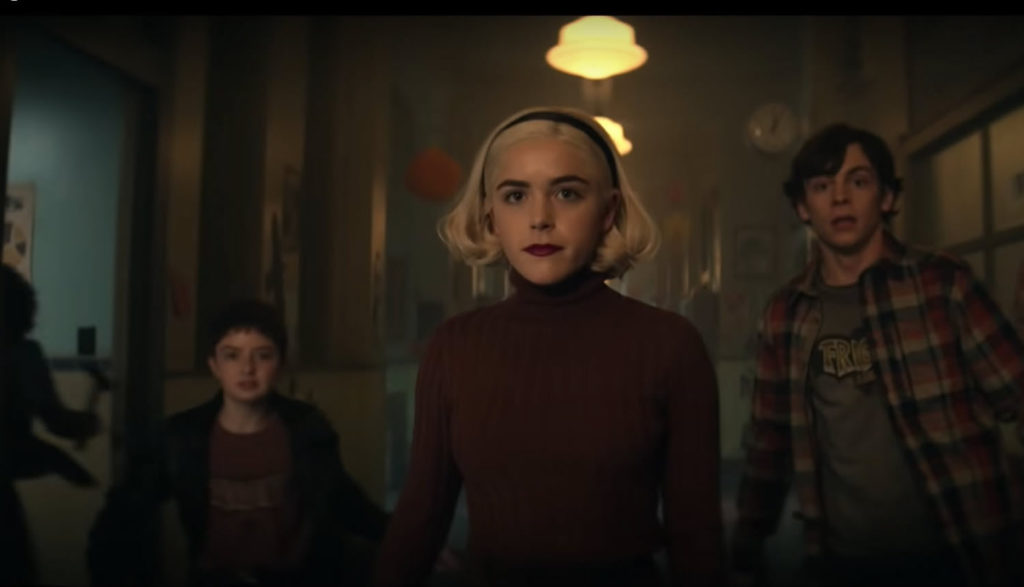
Sweet 16?
For some, it’s more like Stress 16. I mean, you’ve got high school tests to take, drivers’ licenses to earn, family issues to deal with. And if that isn’t enough, well, you’ve got to participate in a dark baptism ceremony and sign your name in the Dark Lord’s book.
Well, that wasn’t an issue for most of us at age 16. But Sabrina Spellman is not like most teens—not even in the admittedly creepy town of Greendale.
Sabrina is a witch—or half a witch, technically. Well, half an archangel if you really want to get into it. Her mom was mortal, and even though she believed for years that her pops was a high priest in the dark church, she recently found out that her dad is actually Lucifer Morningstar—aka the Dark Lord, aka Satan. The Spellmans have a long, storied history in service to the Dark Lord, but even her occultly devoted aunts, Hilda and Zelda, didn’t expect her to follow in her father’s Luciferian legacy to become Queen of Hell.
Before she found out she was a Morningstar, Sabrina debated whether she should even sign the Dark Lord’s book. Yes, she’d enjoy the perks of being a witch. But to sign the book meant saying sayonara to the mortal life she’d made for herself. She’d never see her friends again. No more public high school, either. Or at least, that’s what she’d been told.
She eventually found a workaround allowing her to be both Queen of Hell and a normal teenager after accidentally creating a doppelganger of herself. But as Season 4 opens, she finds herself once again searching for a way to stop the forces of evil (or evil-er, I suppose) without bringing harm to her friends or Hecate-worshipping family.
Just as Sabrina comes from a long line of witches, so this show boasts an extensive legacy in its own right. Sabrina the Teenage Witch first showed up as a character in the Archie comics in 1962, getting her very own comic in 1971. Her character has spawned other incarnations, too—including a manga version, three animated television series, three movies and, of course, the seven-season sitcom starring Melissa Joan Hart.
In most of these versions, Sabrina’s magic is pretty naturalistic: Sure, in the early comics her aunts Zelda and Hilda did have a penchant for cauldrons and pointy hats. But no one was explicitly worshipping Satan—certainly not Sabrina, who was an unfailingly chipper and well-meaning witch. And while her abilities are impressive, they’re typically depicted as being morally-neutral, like double-jointed knees.
But as the title of this new iteration suggests, Netflix was aiming for something more here than just an innocuous, nostalgic retread. The Chilling Adventures of Sabrina wants to get dark.
First, it aims, a bit like Charmed over on the CW, to appropriate witchcraft as a metaphor for female empowerment. When Sabrina starts a women’s group at high school, for instance, her friend Rosalind dubs it the “Women’s Intersectional Cultural and Creative Association,” or WICCA. A darker, more evil witch known as Madam Satan blusters about “puritanical masculinity.” And when Sabrina needs guidance over an important decision, her cousin Ambrose (who identifies as “non-binary”) suggests that she should seek out a special apple—an apparent nod to the fruit of Eden’s Tree of Knowledge. If a man sees it, Ambrose says, “It’s an apple of evil. If it’s a woman, it’s the food of knowledge.”
The magic here is dark magic—and explicitly so. Her aunts sometimes let loose a casual “praise Satan” oath, just as Christians might praise God. Covens are aligned with the powers of darkness and are under the authority of dark priests. Spells and incantations summon occult powers, and potions are sometimes imbued with human blood. Human sacrifices and cannibalism are considered traditional practices by the witches and warlocks in Sabrina’s coven. Medieval references to satanic witches crop up repeatedly. And the fact that Sabrina was baptized as a Christian when she was young stirs a great deal of strife amongst Sabrina’s witchy relatives.
Neither Sabrina nor the show technically embraces Satanism. Indeed Sabrina’s well aware of who the bad guy is here.
But some characters here are explicitly in the devil’s service. And at times, they come across as comical or sympathetic and sometimes both. Not to mention that the few times Christianity does come up, it’s usually to make fun of our “false god” or questioning God’s existence entirely. Watching Sabrina might not lead viewers to hold midnight rites, but its portrait of witchcraft is muddled and, frankly, all too jokey for those who believe that Satan’s presence extends beyond a CGI character on Netflix.
Even if audiences could somehow find a way to navigate Sabrina’s sympathetic depiction of witchcraft and its surrounding dark spirituality, the show’s problems hardly end there.
The TV-14 series seems specifically designed to appeal to teens. It depicts teen sexuality and near nudity, including one episode that shows a teen orgy in which adolescents are depicted in their underwear. (There are also several same-sex couples and a transgender boy who make an appearance.) Sabrina is also surprisingly scary and quite bloody at times. I reviewed the first episode after watching Netflix’s far more adult The Haunting of Hill House. But nothing I’ve thus far seen in The Haunting exceeds a gruesome scene in that very first episode of Sabrina, when someone’s neck gets run through with a pair of scissors. Language can be pretty foul on this Netflix series, too, including s-words.
Mainstream critics have praised The Chilling Adventures of Sabrina for being smart, scary and engaging—as well as socially progressive. But this witchy reboot’s many problems remain devilish indeed.
When an apocalyptic “Void” threatens to swallow the earth, Sabrina must find a way to stop it.
Witches and warlocks perform spells and rituals and pray to the goddess Hecate. Sabrina uses an artifact from pagan culture called Pandora’s Box to trap the Void. A girl’s soul is removed from her own body and transferred into her doppelganger’s corpse. A man who was beheaded has his head reattached to his decaying corpse. Two girls are killed trying to escape the Void. A demonic-looking prince of Hell unleashes a legion of demons on miners, possessing them and causing them to attack other people.
Several teenage couples make out (including one with a transgender boy). Sabrina and her boyfriend nearly have sex but are interrupted. We see several shirtless male characters. Some female characters wear revealing tops.
A girl kills a man with a chainsaw. A woman stabs Satan in the back where his angel wings used to be and drinks his black blood. It is implied that a boy died by suicide when he shows up in “the sweet hereafter” shortly after his girlfriend dies.
As Sabrina struggles with her choice to allow her doppelganger to live as Queen of Hell instead of taking on the job herself, an all-consuming darkness threatens to take over Greendale and the world at large.
People attend a “dark” church (and one woman wearing a cross necklace crosses herself upon entering). Witches and warlocks perform spells and rituals. They also erect altars and pray to the goddess Hecate. Sabrina scares her classmates by creating an illusion of “Bloody Mary,” involving a fake ghost exploding blood all over a boy and bathroom sinks pouring blood instead of water. She also helps to perform a temporary necromancy spell. The ghosts of dead miners haunt the town, destroying all sources of light and killing several people.
Several teenage couples make out (including a transgender boy). Two women kiss. We see a boy using a urinal. A girl complains that her school doesn’t have sex education classes and says that another high school has condom machines in their bathrooms. A girl plans to have two boyfriends. People dance at a prom. People drink alcohol. Someone smokes a cigarette.
Sabrina’s aunts must decide how to pursue their infernal faith now that the Dark Lord is no longer ruling hell. Meanwhile, Sabrina and her friends enter hell on a mission to save her boyfriend, who was sent there at the end of Season 2.
Satan appears as a satyr and chases people through a series of tunnels. People hang on crosses in hell and are eaten alive by birds. A young warlock is possessed by Satan, turning his eyes red. A man’s tongue is kept in a jar. People are stabbed and shot. A child chops off her fingers with a paper cutter while another writes lines on a chalkboard using his own bloody fingertips. A girl slices her hand open with a knife.
People pray to Satan and Lilith (the demon who in the show usurped Satan). Sabrina uses a variety of spells (often spoken in Latin) to aid her on her quest. We see several demons. A demonic woman wears a nun’s tunic and an upside-down crucifix. Demons laugh that there is no God in hell. A door covered in sigils and skulls leads the way to hell. While lecturing on Dante’s Inferno, a teacher tells her students that several authors and artists supposedly went to hell. Two people enter a “Haitian house” and later perform a spell using human blood. We see upside-down crosses in the background.
A teenage couple kisses passionately in their undergarments and lay down to (apparently) have sex. Sabrina and her friends are seen in their underwear as they wash themselves with “ghastly water” (the water you get from cleaning corpses) as they prepare to enter hell. A few teenage boys are seen shirtless. Several couples embrace. High school students sing “My Sharona,” which has some suggestive lyrics.
A teenage girl drinks scotch. A woman smokes a cigarette. We see food infested with flies and maggots. People cough and retch after supposedly swallowing ocean water.
We hear the s-word, “bloody,” and “d–k.” A woman is called a “whore” and “concubine.” In a play on the show’s flip-flop of Christianity vs. Satanism, characters often say things like “Praise Satan” or “There will be Heaven to pay.”
In this Season 2 finale, The Dark Lord returns to Greendale, in his original form, to summon Sabrina as his new Queen of Hell. Sabrina (who is temporarily rendered powerless) attempts to save the entire world from submitting to The Dark Lord by keeping the doors of Hell closed. Elsewhere, Father Blackwood, high priest of the Church of Judas, defies the Dark Lord’s command to bow to Sabrina.
Sabrina and many of her friends perform satanic rituals, cast spells and utter various enchantments to kill, bind and torture the evil people in their midst. There’s also plenty of conversation regarding the hordes of hell, the enslavement of the human race, covens of darkness, giving one’s soul to Satan and the worship of Satan himself.
A religious leader from The Church of Judas poisons his entire congregation after reading from the “Satanic bible.” There’s also conversation about where Christianity was born, how Satan is the father of lies and why renaissance figure Leonardo DaVinci is crucial to killing Satan. The Dark Lord is turned into a beast.
Satan is seen as a fallen angel whose wings have been ripped from his back (his back is bloodied in various scenes). He also walks around in a loincloth (and his backside is exposed). A woman is seen naked from behind. A few women wear cleavage-baring tops. A man suggests he’s interested in sexual activity with another man. A couple shares a kiss.
Two women are threatened with knives. A man is stabbed and blood gushes from his wound. A woman smokes a cigarette and others drink hard liquor. People shout “hail Satan” and a woman is called a “whore.” Profanity includes three uses of the s-word and one or two utterances of “h—,” b–tard” and “crap.” A girl asks “who the heaven are you?”
Sabrina readies herself for her 16th birthday and her “dark baptism,” a tradition she likens to a Jewish bat mitzvah and a rite of passage her ancestors all underwent when they, too, turned 16. And while she’s excited about the ceremony, she’s also conflicted, because it means she’ll have to give up the mortal life she’s lived for the last 16 years.
We hear a great deal of talk about the ceremony (which will require blood—human, if possible), covens, dark priests and the Dark Lord. We apparently see the latter in a vision—a horrific goat-headed monster. Sabrina’s aunts, both witches themselves, sometimes say “praise Satan,” and one talks about the “sacred honor and duty” to walk the dark path. Spells, including curses, are cast. Potions are brewed. Familiars such as Sabrina’s black cat (Salem) are said to be goblins that serve witches, though Sabrina insists that her own pact with Salem is more like a partnership. In the opening credits, we see Lovecraftian monsters, demons and satanic symbols.
A kindly teacher picks up a confused woman wandering along the road. In return, the woman causes a pair of scissors to stab the teacher in the throat: Blood spits and spurts out of the wound and the teacher dies, blood pooling around her head. The woman takes over the teacher’s body and becomes a character known as Lady Satan, an agent sent by the Dark Lord to ensure that Sabrina signs his book and becomes his full-fledged servant.
An animated scarecrow chases Sabrina before it’s “killed.” A bat crashes through Sabrina’s bedroom window: It appears that Sabrina kills the injured creature with a book. We see the corpse of a stabbing victim, with several wounds apparent on the young man’s chest. We see visions of witches, apparently long-dead, hanging from a huge apple tree. We glimpse clips from the zombie movie Night of the Living Dead, and we learn that Sabrina loves horror flicks—”The gorier, the better,” she says.
In a dream sequence, the 16-year-old Sabrina steps out of a bathtub, and audiences see the side of her breast and a portion of her backside. She kisses her boyfriend frequently, and she tells her aunts that the two have taken a significant step forward in their relationship. When the aunts are aghast, worried that she might’ve lost her virginity before her dark baptism, Sabrina says they’ve not gone that far. But she adds, “I have reservations about saving myself for the Dark Lord. Why does he get to decide what I do or don’t do with my body?”
One of Sabrina’s friends is assaulted off-camera by four football players, who apparently lift up her shirt to make sure she has breasts. When Sabrina complains of the attack to the principal, he doesn’t do anything. (In retaliation, Sabrina sends a division of spiders to scare the principal into taking a sick day.) We hear a reference to possible cannibalism. Characters say the s-word once, along with “a–,” “b–ch” and “h—.” God’s name is misused three times.


Paul Asay has been part of the Plugged In staff since 2007, watching and reviewing roughly 15 quintillion movies and television shows. He’s written for a number of other publications, too, including Time, The Washington Post and Christianity Today. The author of several books, Paul loves to find spirituality in unexpected places, including popular entertainment, and he loves all things superhero. His vices include James Bond films, Mountain Dew and terrible B-grade movies. He’s married, has two children and a neurotic dog, runs marathons on occasion and hopes to someday own his own tuxedo. Feel free to follow him on Twitter @AsayPaul.

Emily studied film and writing when she was in college. And when she isn’t being way too competitive while playing board games, she enjoys food, sleep, and geeking out with her husband indulging in their “nerdoms,” which is the collective fan cultures of everything they love, such as Star Wars, Star Trek, Stargate and Lord of the Rings.

Kristin Smith joined the Plugged In team in 2017. Formerly a Spanish and English teacher, Kristin loves reading literature and eating authentic Mexican tacos. She and her husband, Eddy, love raising their children Judah and Selah. Kristin also has a deep affection for coffee, music, her dog (Cali) and cat (Aslan).

Netflix takes a classic sitcom, Good Times, and turns it into a vulgar, violent, sexually-charged TV-MA show.
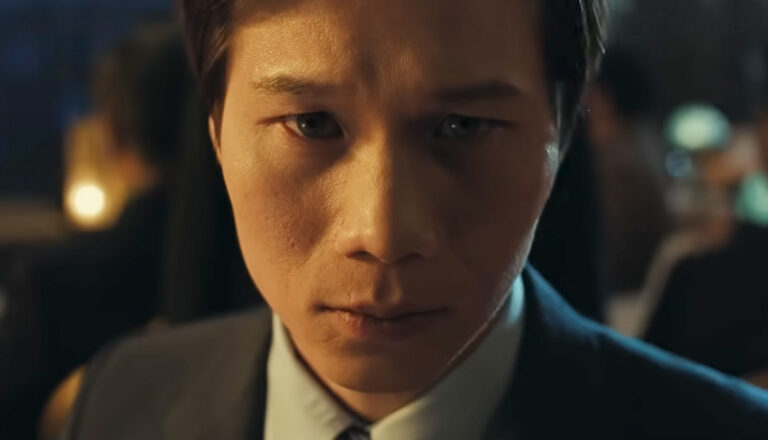
While its protagonist might live a nuanced life, The Sympathizer’s problematic content can’t be described the same way.
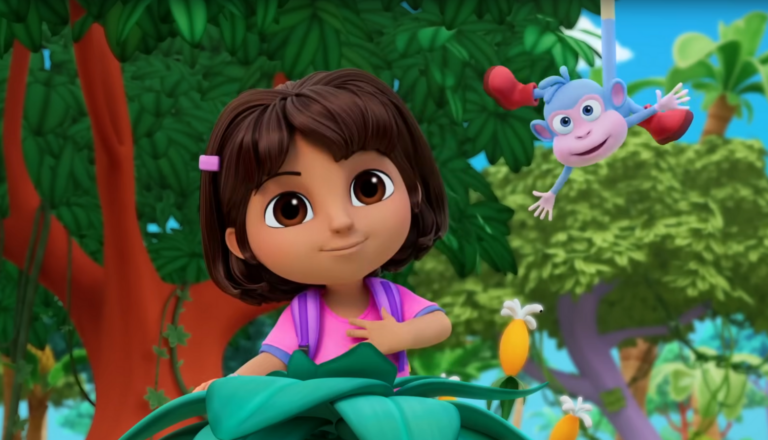
Say hola once again to the iconic explorer in this faithful reboot of the children’s series.
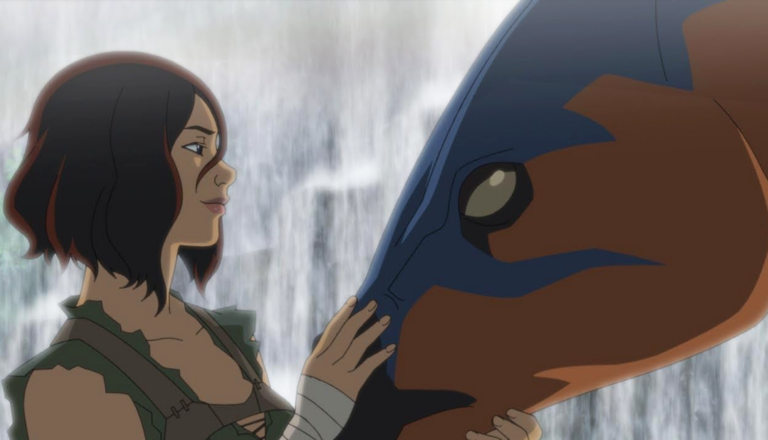
Based on a popular video game, Ark: The Animated Series features hungry dinosaurs, bloodthirsty people and plenty of problems.